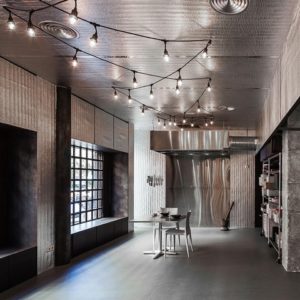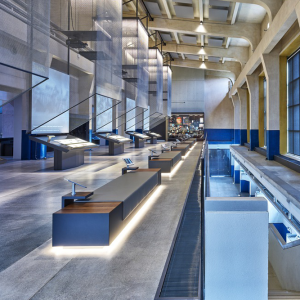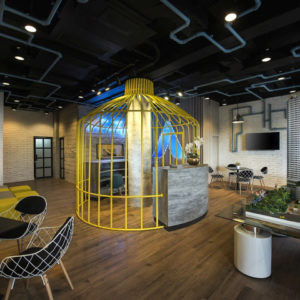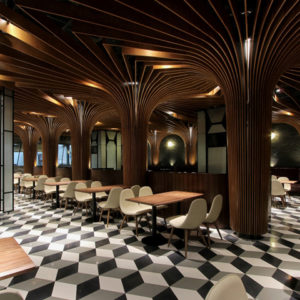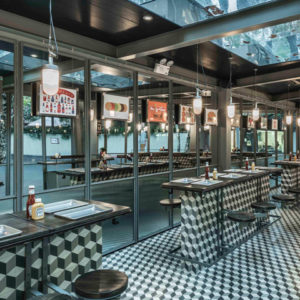
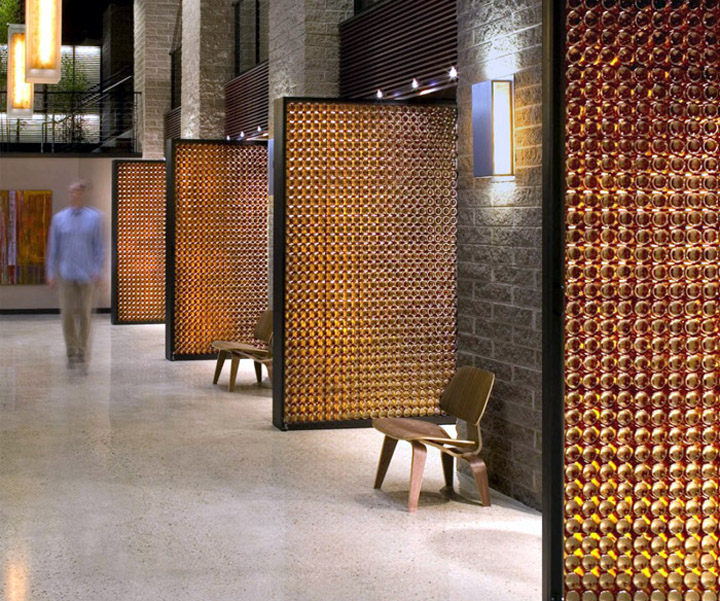

Milwaukee’s Blatz Brewery, one of the city’s oldest and now defunct breweries listed on the National register of Historic Places, occupies a narrow block at the downtown’s northern periphery. Built between 1851 and 1910, the massive masonry monolith had undergone a series of additions and alterations in the 1980s to accommodate for apartments and offices but had subsequently fallen into disrepair.

Buffered by a bamboo grove, the lobby overlooks a lower level lounge, which features a series of monumental bottle doors; depending on the doors’ position, the lounge can be used as one large open space, or divided into smaller intimate areas.

Each pivoting bottle door is 9’-6” wide and 9’ tall and consists of a welded aluminum frame and 1,590 horizontally stacked empty beer bottles, some of which were original Blatz bottles found in unopened boxes in the basement of this old brewery. Using CNC technology, the bottles are held in place by a thin web of precision-milled neoprene rings that are suspended between the members of the aluminum frame. Illuminated on all sides, the brown bottles emanate a warm amber glow reflected in the polished concrete floor.

Johnsen Schmaling Architects developed a customized set of pivoting hardware that allows a lounge guest to rotate each door around its center axis, thus permitting a high degree of spatial flexibility: the space can be totally open or, alternatively, private parties can be held in one part of the lounge while the other one remains accessible to the public.

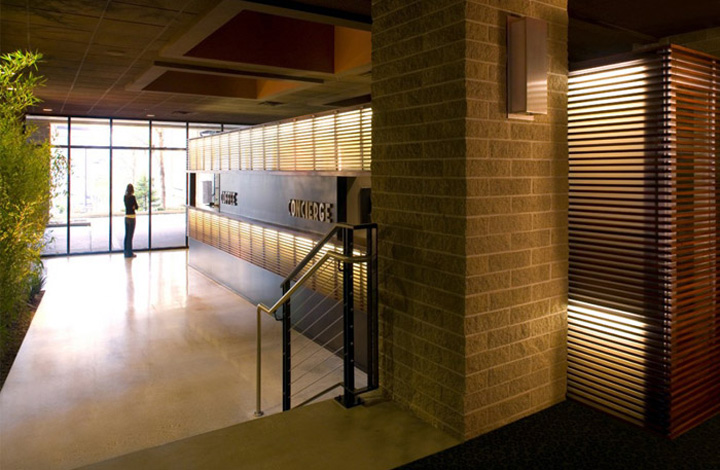
http://www.archdaily.com/36426/the-blatz-johnsen-schmaling-architects/





Add to collection


